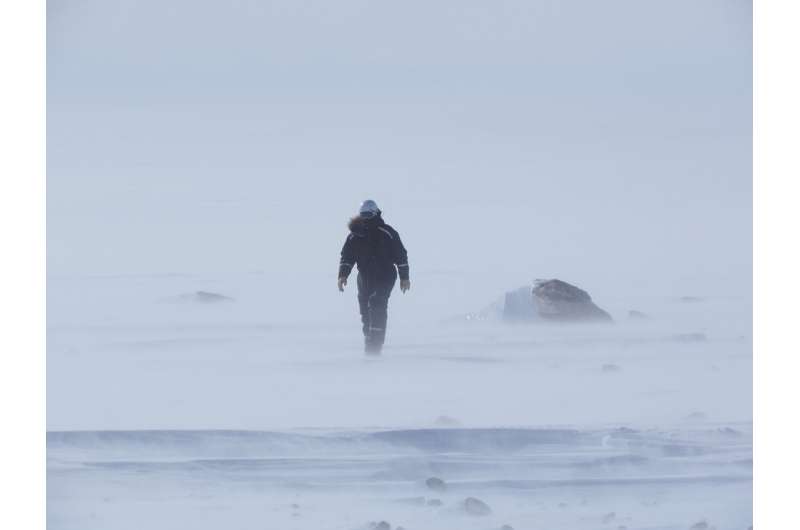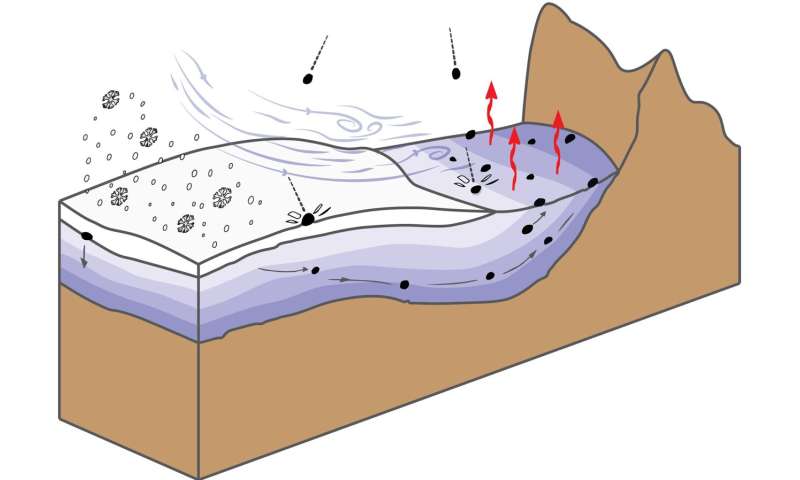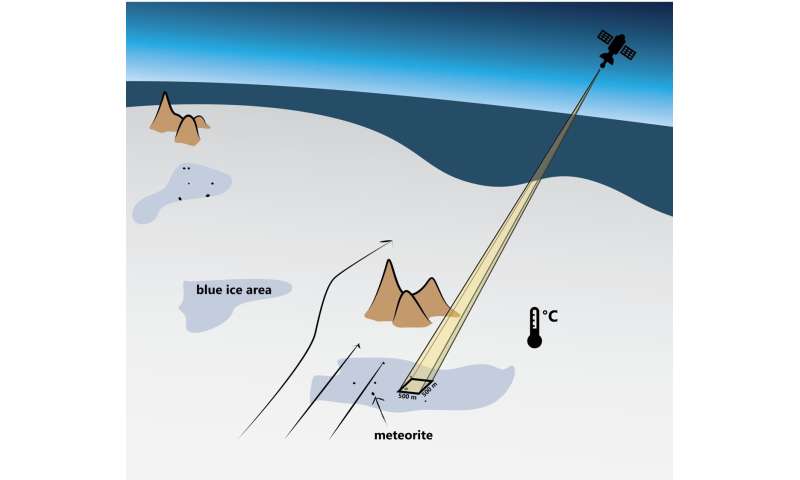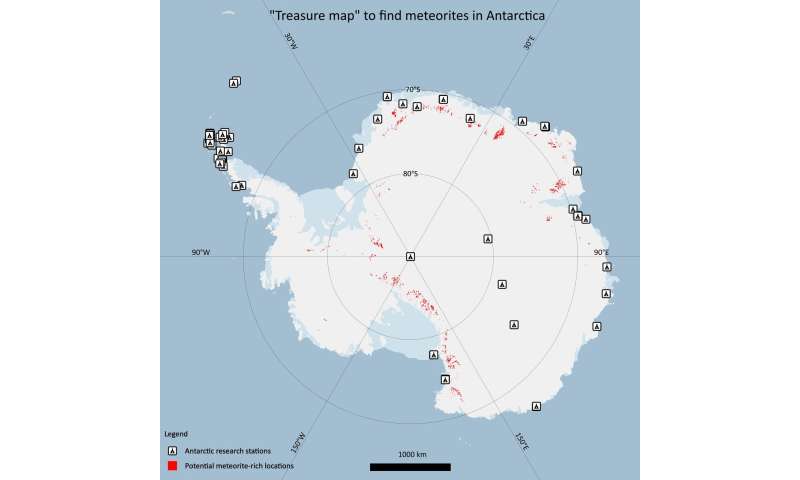January 27, 2022 report
Using machine learning to find space rocks in Antarctica

A team of researchers from Université libre de Bruxelles, Delft University of Technology and Vrije Universiteit Brussel used AI technology to find meteorites hidden in Antarctic ice. The group describes how their AI system works and what it has shown them thus far in the journal Science Advances.
Prior research has shown that a large number of meteorites strike the earth on a regular basis; two-thirds of all recoveries occur in Antarctica. This is because the continent is covered in ice and preserves them. Also, their dark coloration tends to stand out. Prior research has shown that most such meteorites land on snow-covered ice, where they become embedded and are covered by more snow. Over time, as the ice accumulates, it moves slowly toward the ocean, where the meteorites drop to the bottom of the sea. But other meteorites wind up in ice that does not migrate as much and has a different texture. Known as blue ice, it can harbor relatively easily retrievable meteorites. Most meteorites found in Antarctica have been found in blue ice. To date, the means of finding such meteorites involves educated guessing and random wandering, which the researchers note, is not very efficient. In this new effort, they used a machine-learning application to narrow down the search.
To apply an AI system to the task, the researchers trained it with satellite data covering the entire continent, along with data that showed where blue ice fields containing meteorites have been found. They helped the system by adding information about sites that yielded meteorites, such as temperature and ice conditions. They then used the system to search the icy continent for zones that met the criteria for likely meteorite sites—and found it to be approximately 83 percent accurate. It also found more than 600 potential zones that it marked for a closer look by team members on the ground. They note that many of the discovered zones were relatively close to research stations.
The researchers suggest the new AI tool, combined with the use of drones, is likely to result in finding many meteorites in the coming years, which they suggest should help scientists better understand the history of the solar system.
-

Illustration of the mechanism related to the ice flow and ablation (red arrows) that concentrates meteorites in so-called blue ice areas in Antarctica. Credit: Veronica Tollenaar -

Infographic illustrating the concept of the methods used in the study. Antarctic meteorites are found in areas where blue-colored ice is exposed at the surface (in contrast to snow). Indirect satellite observations (such as the ice flow velocity and the surface temperature) predict which blue ice areas contain meteorites. Credit: Veronica Tollenaar -

“Treasure map” to find meteorites in Antarctica. Also indicates the Antarctic research stations (as listed by COMNAP, comnap.aq/). Credit: Veronica Tollenaar
More information: Veronica Tollenaar et al, Unexplored Antarctic meteorite collection sites revealed through machine learning, Science Advances (2022). DOI: 10.1126/sciadv.abj8138
tudelft.pageflow.io/meteorite#327943
Journal information: Science Advances
© 2022 Science X Network




















